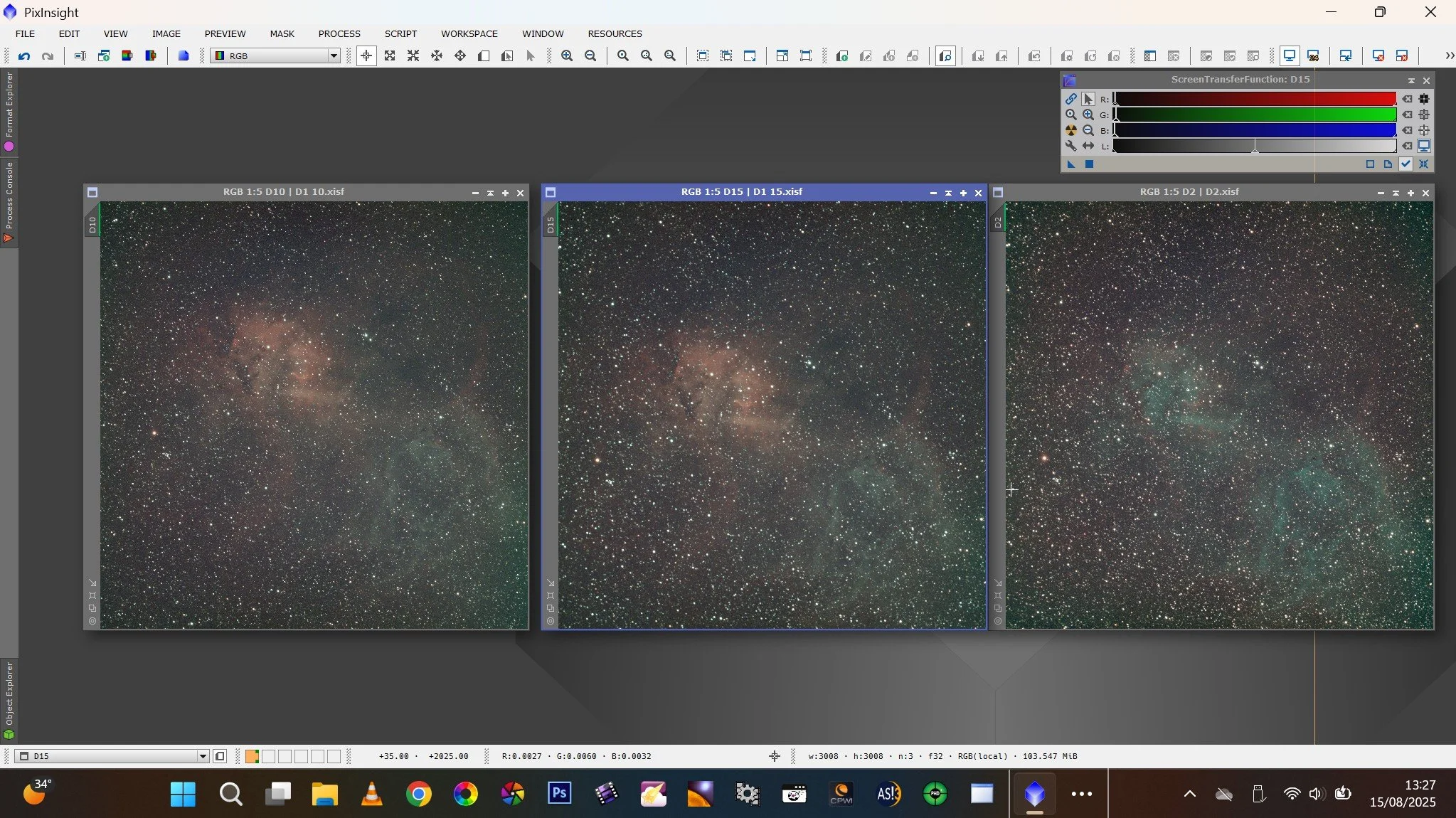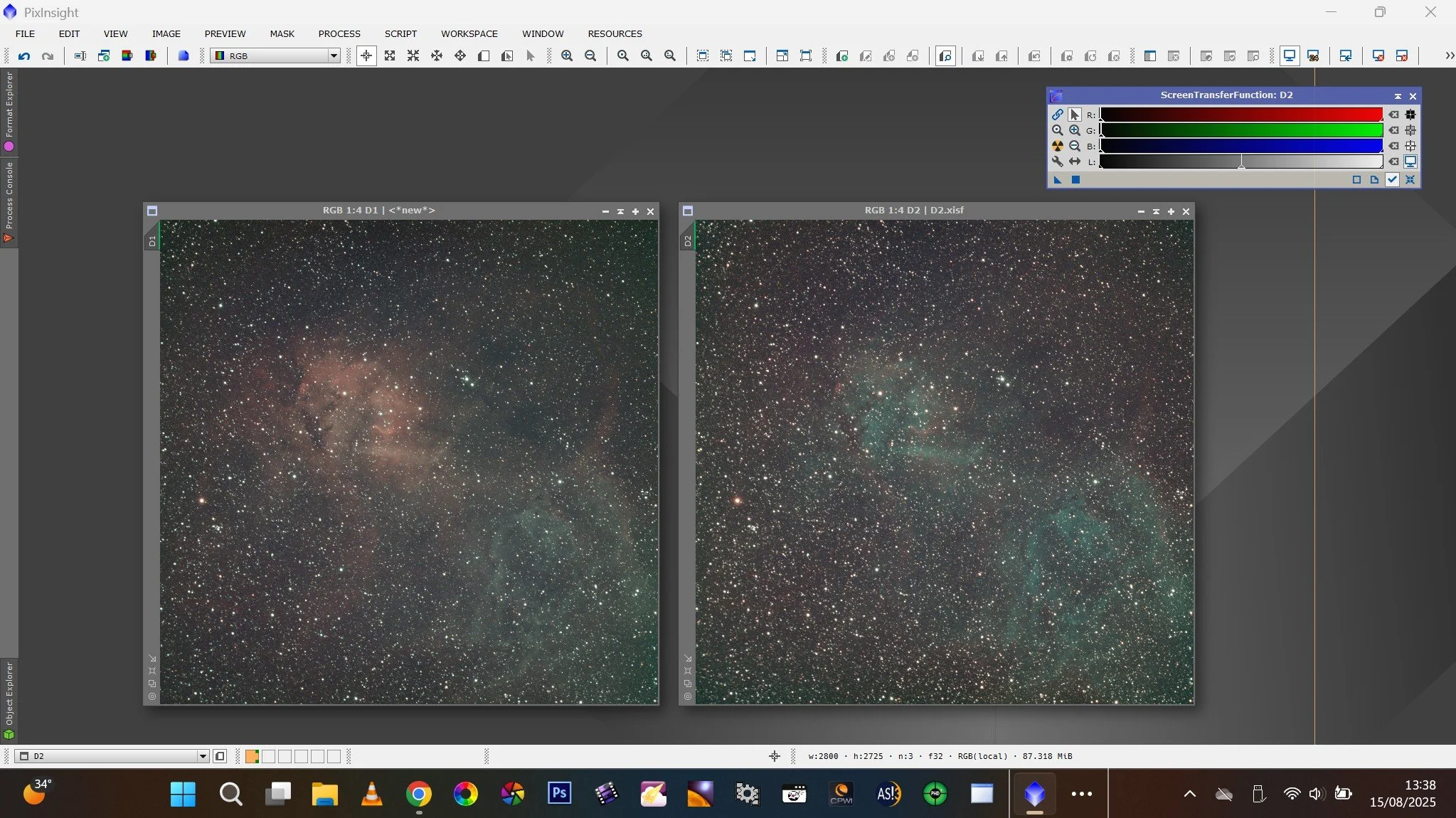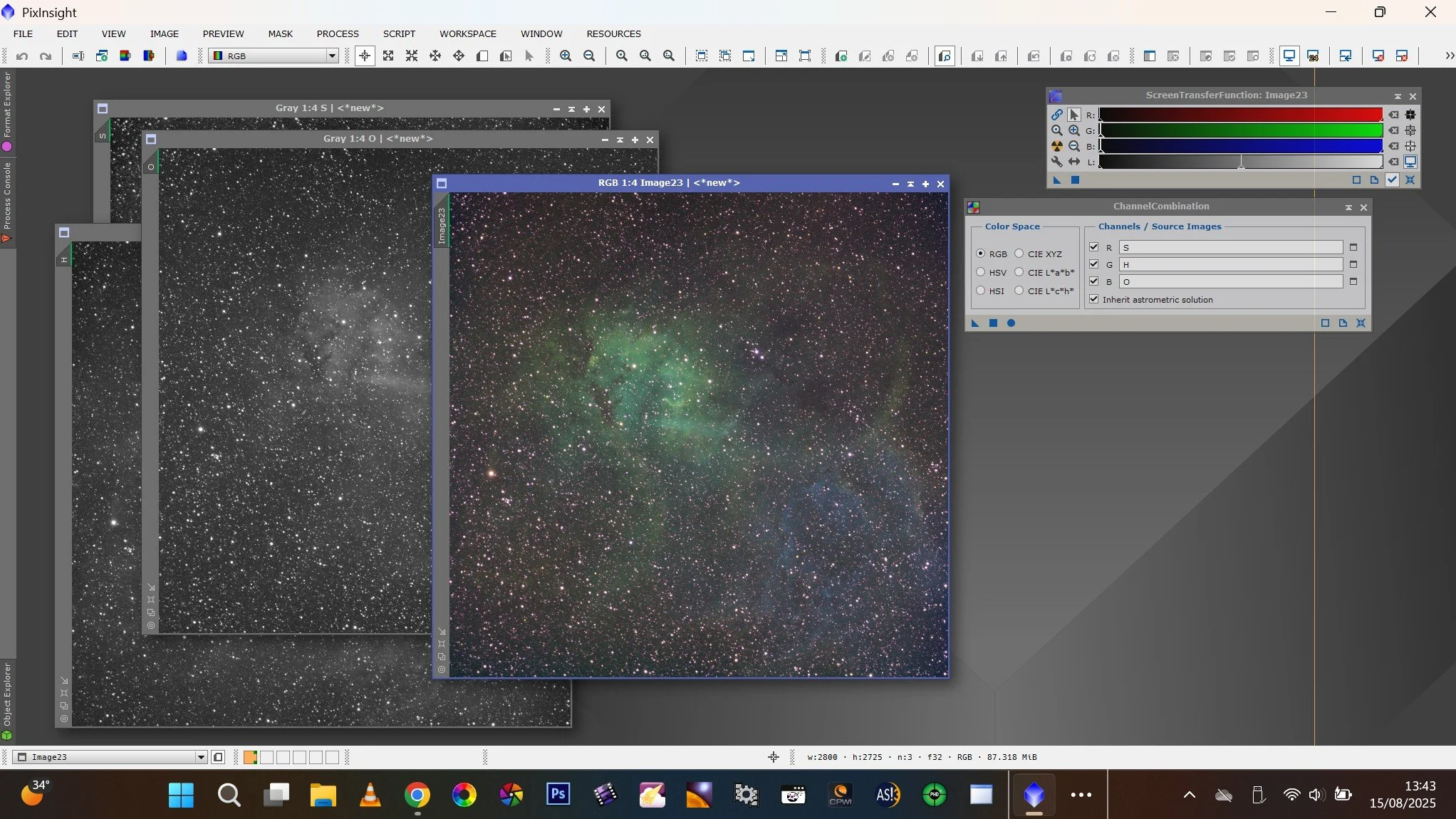SH2 - 132 : The Lion Nebula in SHO (Hubble Palette)
Sh2-132 (also called Sharpless 132) known as the Lion Nebula, is a large emission nebula located in the constellation Cepheus.
Sh2-132 was catalogued by the American astronomer Stewart Sharpless in 1959.
Sharpless compiled the Sharpless Catalogue of H II Regions (first version in 1953, updated in 1959), which lists 313 emission nebulae identified on the Palomar Observatory Sky Survey plates.
The Lion Nebula is situated on the southern edge of the constellation, near the border with the constellation Lacerta, along the Milky Way. The best time to observe it in the night sky is from July to December, and it is particularly visible from locations in the northern hemisphere.
Sh2-132 is located at a distance of approximately 3,200 parsecs (∼10,400 light-years), placing it within the Perseus Arm, in the Cepheus OB1 region, a large and luminous OB association. The stars responsible for ionizing its gas are very hot and massive.
An OB association is a group of stars (stellar association) that are not gravitationally bound, and which includes stars of spectral types O or B. These associations initially form in relatively small regions of space. The gas and dust remaining after the stars are formed are then expelled, and the remaining stars are no longer gravitationally bound. It is believed that 90% of the stars in our galaxy were formed in such associations.
Set up
Fra400 on Celestron AVX Mount
ASI533 MC Pro camera for imaging
ASI120 mini camera for guiding via OAG Zwo
Askar D1 (Hydrogen & Oxygen)
Askar D2 (Sulfur & Oxygen)
Control via ASIAIR PLUS
Gain (ISO) : 101
Camera cooling : -10°C
Preprocessing and Processing : Pixinsight
The session
Lion Nebula" (Sh2-132), imaged from Saturday, August 9th to Tuesday, August 12th, under somewhat unusual conditions, with a bright moon in the sky.
Saturday and Sunday with Askar D1 filter:
18 exposures of 10 minutes each
12 exposures of 15 minutes each
Monday and Tuesday with Askar D2 filter:
24 exposures of 15 minutes each
Total integration time : 12 hours
When I saw what the individual images looked like, whether for D1 or D2, I thought to myself : "This isn't going to be easy..."
After Stacking the images
After integrating the 10-minute and 15-minute images on D1 (left image) and the 15-minute exposures on D2 (image on the right)
The SHO combination
The process in PixInsight
Star alignment
Dynamic crop
Integration of 10 and 15-minute exposures on D1 to obtain a single image file
Splitting the RGB channels, then renaming them SHO
Combining the channels using Channel Combine to create the SHO image
Auto Gradient using Setiastro script
BlurX Terminator
StarX Terminator
Stretching the stars using Setiastro script
Stretching the non-star region : by adjusting the STF triangle towards the histogram transformation, then applying the effect
Noise reduction (NoiseX) at 0.60
SCNR at 0.71, then Ctrl+I to invert the image, then apply SCNR again at 0.71
Synthetic Luminance extraction , then Local Histogram Equalization applied only to the luminance layer
LRGB Combine to integrate the luminance layer with the SHO image
Various masks with a 3-pass blur mask, followed by a curve adjustment each time
HDR Multiscale at 7, using the Lightness mask
Range Selection for fine-tuning
Star reduction in moderate mode, 2 iterations
I finished with a slight application of NoiseX
The Final Image
Astrometry : Annotated Image
Clear Sky !
Leave a comment







